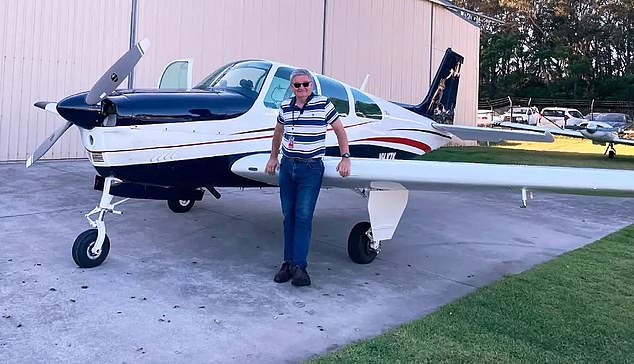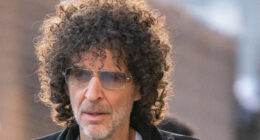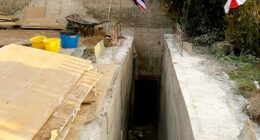The wife of a pilot who disappeared while flying over the Snowy Mountains has spoken out as police claim to have located the crashed plane.
Brogo resident David Stephens, 74, has been identified as the plane’s pilot which failed to land at Moruya Airport on NSW’s Far South Coast about 4.30pm on Tuesday.
It was flying from Wangaratta in north-east Victoria.
After two days of perilous ground and air searches, police claim to have found what is believed to be the crashed plane.
‘About 4.00pm today (Thursday 17 July 2025), a rescue helicopter located what is believed to be the crashed plane near the planes last known GPS location,’ a NSW Police spokesperson said.
NSW Police have now taken charge of the search, which was previously led by the Australian Maritime Safety Authority (AMSA) with investigations to continue on Friday.
Police did not provide any information on Mr Stephens, who is understood to have been the planes sole occupant.
A tax accountant by trade, Mr Stephens reportedly planned to retire within months has been described as a respected member of the Sapphire Coast community.

David Stephens (pictured) was due to land at Moruya Airport on Tuesday afternoon

Search efforts have been ongoing since Tuesday amid ‘hazardous’ alpine conditions

The plane was declared missing after it failed to make its landing at Moruya on Tuesday
His wife Lynda Stephens said he is an experienced pilot who was proud of the 1966 Beechcraft Debonair plane he housed at Moruya Airport.
‘Unfortunately, David disappeared on his flight home on Tuesday, July 15, after having his aircraft inspected,’ Ms Stephens told the Bay Post.
‘David has quite a bit of experience flying the plane, but we can’t know what situation he was facing, and we’ll only have answers once they locate the plane and, with that, David.’
A NSW Police spokesperson previously said the plane may have crashed within 500 metres of the Dargals Trail, a remote hiking track in Kosciuszko National Park.
The circumstances leading to the suspected crash are not clear, but Ms Stephens said her may have made the decision to forge ahead through challenging weather.
She told the newspaper he ‘must have seen a way over the mountain to decide not to turn back to Wangaratta’.
Mr Stephens serves as the secretary for Bega Valley aviation club, Frog’s Hollow Flyers.

AMSA has led the search effort with assistance from NSW Police, NSW SES and others
Owner of the club’s airstrip, Eric Johnston, told Daily Mail Australia Mr Stephens had served the club for about a year and was ‘highly respected’ by its members.
Search efforts were ongoing since Tuesday, suspended overnight due to ‘hazardous’ conditions and limited visibility.
AMSA first sounded the alarm when it was notified by Air Services Australia that an aircraft had missed its arrival time at Moruya Airport on Tuesday afternoon.
Its last known location was near Khancoban in the western foothills of the Snowy Mountains, where the terrain has been described as ‘rugged and inaccessible’.
Search efforts have been led by the Australian Maritime Safety Authority (AMSA) with assistance from NSW Police, NSW State Emergency Service, NSW National Parks and Wildlife service and Snowy Hydro.
A spokesperson for NSW Police told Daily Mail Australia on Thursday evening crews were navigating ‘steep terrain impacted by snow and foggy conditions’.
Meanwhile, an AMSA Challenger rescue jet and two helicopters from Victoria and the ACT are continuing to conduct overhead searches.
AMSA response centre duty manager Dan Gillis said search efforts were forging on through ‘hazardous’ ground conditions on Thursday afternoon.
‘The ground crew are having significant challenges with access to the region, the trails are heavily snowed in, it’s very rugged terrain and very steep alpine terrain that they’re trying to navigate through,’ he said.
Temperatures at Khancoban ranged between five and ten degrees Celsius on Tuesday with snow showers forecast at higher altitudes.
Further showers are expected to take place on Friday with temperatures falling as low as minus one degree Celsius.









